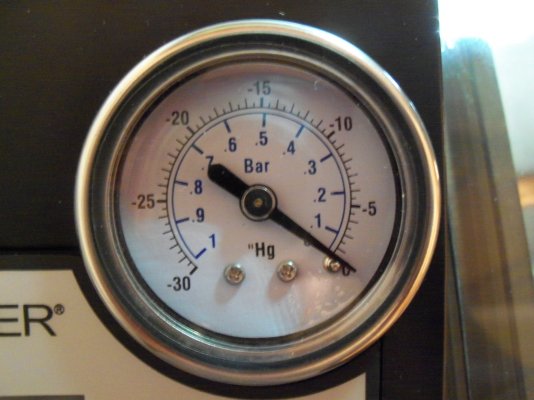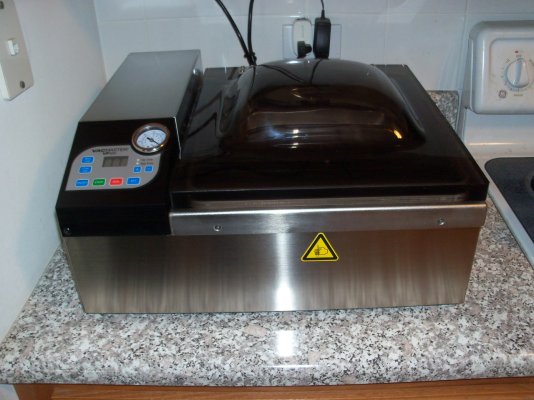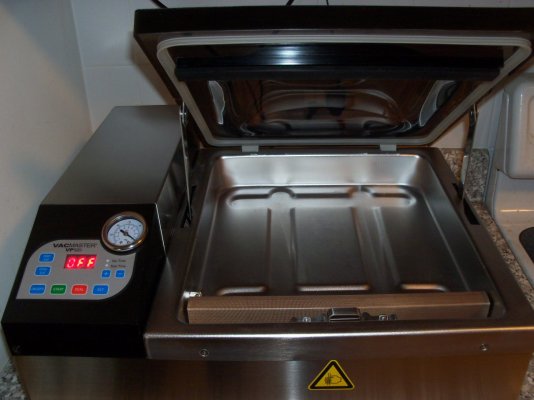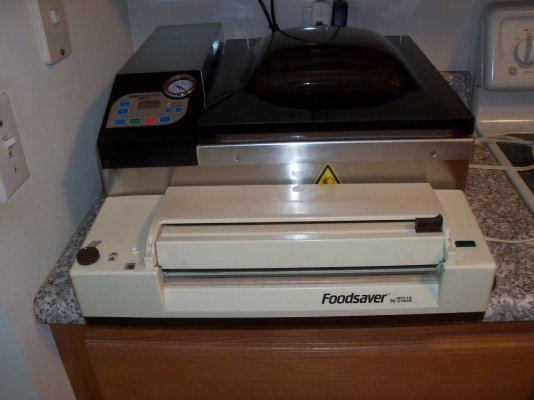easysurfer
Give me a museum and I'll fill it. (Picasso) Give me a forum ...
- Joined
- Jun 11, 2008
- Messages
- 13,151
I recently spent my IRS refund on a present to myself  and got a chamber vacuum food sealer. I like the sealer, but one [-]stupid[/-] simple question.
and got a chamber vacuum food sealer. I like the sealer, but one [-]stupid[/-] simple question.
How do I read the pressure gauge?
Now where in the instruction booklet does that say what the numbers mean, instead just says the pressure gauge measures the pressure . That's great but not for the average consumer like me.
. That's great but not for the average consumer like me.
I attached a picture of the built-in gauge on the sealer.
Does the Bar scale indicate the percentage of air evacuation? 0 when the machine is off, but then when pump is running, increments in 10% (.1) until 100% (1 on the scale). Just a guess on my part.
p.s. Got an avocado sealed in a storage bag for 1 day and counting. Still looks fresh .
.
How do I read the pressure gauge?
Now where in the instruction booklet does that say what the numbers mean, instead just says the pressure gauge measures the pressure
 . That's great but not for the average consumer like me.
. That's great but not for the average consumer like me.I attached a picture of the built-in gauge on the sealer.
Does the Bar scale indicate the percentage of air evacuation? 0 when the machine is off, but then when pump is running, increments in 10% (.1) until 100% (1 on the scale). Just a guess on my part.
p.s. Got an avocado sealed in a storage bag for 1 day and counting. Still looks fresh
Attachments
Last edited:




